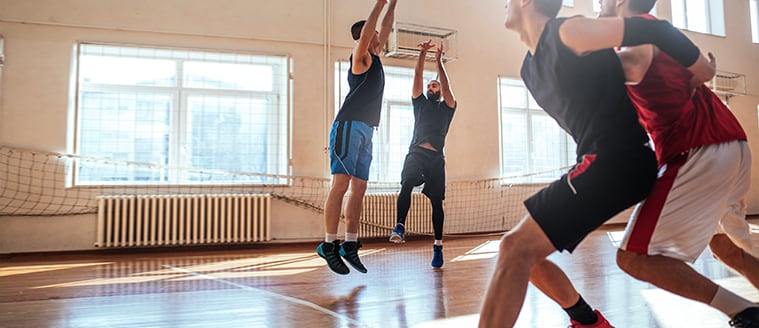ACL Tears

What is an ACL tear?
Inside your knee joint, you have two cruciate ligaments: the anterior cruciate ligament (ACL) and the posterior cruciate ligament (PCL). The ACL crosses over the front of the PCL, forming an “X.” Together, the ACL and PCL help maintain and control the back-and-forth motions of your knee. When the ACL sustains injury and tears, it is known as an ACL tear.
An injured ACL is known as a sprain. The severity of an ACL injury can vary and is measured according to how much tearing has occurred. There are three grades of ACL sprains:
- Grade 1 sprains — the ACL has sustained a minor degree of stretching, but can still keep the knee stabilized.
- Grade 2 sprains — a partial tearing of the ACL has occurred, causing the ligament to become weak and loose.
- Grade 3 sprains — a complete tearing of the ACL has occurred, splitting the ligament in two and causing instability of the knee joint.
What causes the ACL to tear?
ACL tears can occur when the knee sustains trauma, typically during sport or other related activities. Trauma to the knee can occur through a direct impact injury or through a non-contact injury. Most ACL injuries are the result of non-contact injuries, which occur when the body makes an awkward maneuver or movement. Movements that may cause the ACL to tear or sustain injury include:
- A quick change in direction
- Coming to an abrupt stop
- Decrease speed while running
- Making an incorrect landing
What are the symptoms of a torn ACL?
Typically, the very first signs that you may have torn your ACL is a sudden “popping” sound in your knee and feeling as though your knee may buckle. Other signs and symptoms of a torn ACL may include:
- Pain and tenderness of the affected area
- Knee swelling within 24 hours of the ACL tearing
- Feeling as though your knee is unstable when attempting to engage in sports or other related activities
- A decreased or loss of mobility in the affected knee
- Experiencing discomfort when you walk
How do I know if I have a torn ACL?
If you are experiencing any of the above symptoms or believe you have a torn ACL, an evaluation by an experienced medical professional can help determine the cause of your symptoms. To help diagnose an ACL tear, your doctor will begin by going over your medical history and symptoms. Next, your doctor will perform a physical exam to help assess the injured knee against the non-affected knee. A physical exam is usually enough for your doctor to confirm a diagnosis. However, in some cases, your doctor may require additional testing to help verify a diagnosis. Additional testing may include X-rays, MRIs, and other imaging tests.
How is a torn ACL treated?
If you are suffering from an ACL tear and are seeking pain relief, there are surgical and nonsurgical treatment options available. While a torn ACL cannot heal without surgery, older patients or patients with low-activity lifestyles may only require conservative treatment.
Here at our practice, whenever possible, we aim to first recommend nonsurgical treatments to help restore mobility, alleviate pain, and prevent the progression of damage. Nonsurgical treatment options may include:
- Knee brace to help support and stabilize the knee
- Crutches to keep weight off the affected leg prevent further damage
- Physical therapy and exercises to restore knee function and improve leg strength
For athletes who wish to return to sports, surgery is usually required. The procedure, which involves rebuilding the damaged ACL, can be done via arthroscopic surgery — a minimally invasive treatment method that allows for quicker recovery time and improved knee function. Platelet-rich plasma therapy may also be used to help promote healing, alleviate pain, and enhance recovery time.
If you are experiencing symptoms of an ACL tear, a consultation with an orthopedic specialist may be the first step towards diagnosis, treatment, and recovery. Dr. Burrus is an experienced fellowship-trained orthopedic surgeon who is dedicated to providing high-quality, specialized holistic care. Call (512) 324-9170 or fill out the form on this page to schedule an appointment.